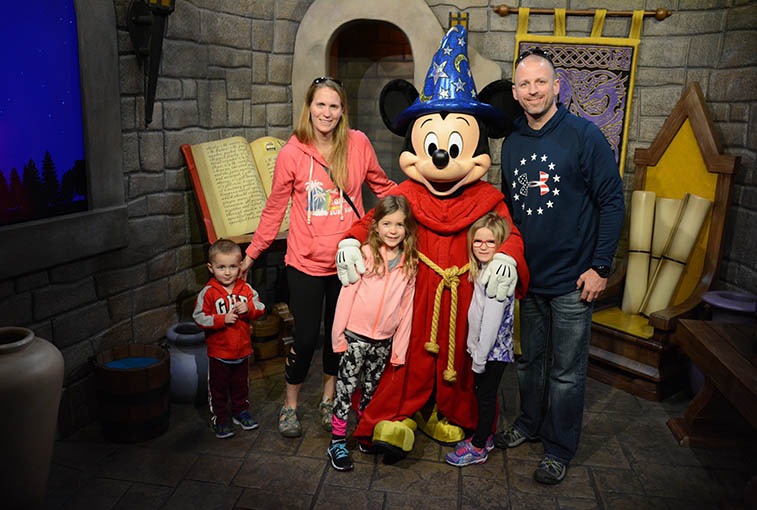Kevin Wolnik struggled with sleep apnea for nearly six years. Continuous positive airway pressure (CPAP) wasn’t working for him, and he wasn’t sleeping well.
He began to research Inspire therapy, an implanted neurostimulation system that works with the body’s natural breathing to treat sleep apnea, and he became interested in trying it. After undergoing the required sleep study, he was approved by his physician for the procedure. On July 11, 2018, he was the second patient at Sanford Health to have the Inspire sleep device implanted. Wolnik now sleeps soundly and recommends it to others who struggle with sleep apnea and CPAP.
How Inspire therapy works
During sleep, the muscles and soft tissues in the back of the throat can relax and block the airway, often resulting in loud snoring and airway blockages. When these airway blockages happen over and over during sleep, patients continuously wake up to begin breathing correctly.
Constant awakening during sleep can cause daytime sleepiness as well as cardiovascular and brain health issues. Inspire therapy treats obstructive sleep apnea by delivering mild stimulation to the nerve that controls the tongue, keeping the muscles and soft tissues from sagging and blocking the airway.
Inspire treats the root causes of sleep apnea, the recurring closure of the upper airway, by working with the body’s natural breathing process. It’s a small implant that is inserted through three small incisions during an outpatient procedure. Each night when they go to sleep, Inspire patients turn the device on with their Inspire sleep remote. The Inspire system is designed to sync with the natural breathing of the body to deliver mild stimulation.
Similar to a pacemaker, two wires called leads are connected to the generator. One lead senses when the patient inhales. The other delivers mild stimulation that nudges the tongue forward, preventing the collapse that blocks the airway. This happens throughout the night — the system continues to keep the airway open, giving the patient a restful night’s sleep.
Who qualifies for Inspire therapy?
The first step in treatment for sleep apnea is CPAP therapy. The CPAP system takes air from the room, then boosts the pressure of it with the help of the machine. The device then humidifies the air that blows into the mouth and/or nose of the patient through a hose and face mask. That continuous air keeps the airway open, which prevents snoring and trouble sleeping.
Inspire therapy is an innovation for patients who can’t tolerate or get consistent benefit from CPAP. As a second line therapy, patients must first fail on CPAP before sleep doctors consider them for Inspire. With that, sleep physicians might order another sleep study if the one that qualified them for CPAP is too old.
Wolnik’s sleep study showed severe enough results to approve him for Inspire.
“I sleep way better than I did with the machine. I just have to make sure I have batteries in my remote,” he said.
Wolnik appreciates the convenience of the implanted treatment option and says it’s much easier to travel.
“It’s so much easier to just grab the remote and hit start.”
As with most surgical procedures, Wolnik recalls needing to take over-the-counter pain medication after the surgery. He had pain and soreness for about a month but says he has had no issues since. To allow for proper healing, Inspire is turned on about a month after implantation. The patient begins using the Sleep Remote to tune their Inspire and find the setting that gives them comfortable, restful sleep.
The final sleep study is conducted after the first couple of months, when the sleep physician fine-tunes the device. Then the patient is free to use Inspire all night, every night.
Inspire therapy at Sanford
In January 2018, the Sanford Health sleep team was just beginning to discuss options with Inspire therapy. By June 2018, Sanford Health was implanting its first device. Since then, 19 have been implanted and five or six more are scheduled.
“So far, 100 percent of patients are glad they did it,” said Dr. Kevin Faber, sleep specialist at Sanford Health who treated Wolnik.
Wolnik said he definitely recommends Inspire therapy to others. He’s glad he did it as he now sleeps better and has had no issues with it. According to Dr. Faber, that’s a common experience for Inspire patients at Sanford.
“The patients we’ve had so far have done remarkably well,” said Dr. Faber. “To a T, every one of them have been glad they did it. Even in those that we’ve had to tweak, they say their sleep is so much better than it was before Inspire.”
Dr. Faber said it’s rewarding to provide a solution that positively affects a patient’s life.
“It’s wonderful for us as providers to have another tool in the toolbox to help improve someone’s quality of life.”
Read more
- Health effects of daylight saving time and tips to ease them
- CPAP machines can help treat sleep apnea, other conditions
- Meet your health care needs with Sanford Health Equip
…
Posted In Healthy Living, Innovations, Sleep Medicine
